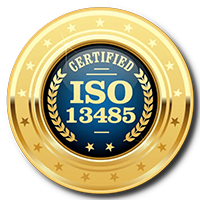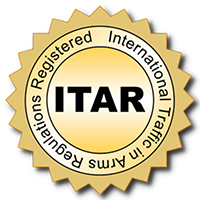THE TRUE COST OF "CHEAP" INJECTION MOLD TOOLING
 This case study examines a medical device manufacturer’s decision to purchase low-cost overseas injection mold tooling instead of domestic production quality tooling. Unfortunately, this scenario is all too common; what seems like a cost-saving choice at the start often turns into a costly lesson marked by delays, rework, and compromised quality.
This case study examines a medical device manufacturer’s decision to purchase low-cost overseas injection mold tooling instead of domestic production quality tooling. Unfortunately, this scenario is all too common; what seems like a cost-saving choice at the start often turns into a costly lesson marked by delays, rework, and compromised quality.
A medical device manufacturer needed a production-quality injection mold for a critical component. Crescent Industries quoted a US-built tool at $49,000.00, made from fully hardened tool steel, validated, and guaranteed for up to 1,000,000 shots. Concerned about the upfront cost, the customer decided to purchase an injection mold overseas instead. The analysis reveals how an apparent $37,000 cost savings turned into significant financial losses, production delays, and quality issues that ultimately could require purchasing new tooling anyway.
| Domestic Quote (Crescent Industries) | Overseas/Cheap Tooling Alternative Quote |
| Cost: $49,000 | Cost: $12,000 |
| Specifications: Fully Hardened Tool Steel, Production Quality, Fully Validated Molding Process | Apparent Savings: $37,000 (75% reduction) |
| Guarantee: Up to 1 Million Shots | Choice: Made Solely on Initial Upfront Tooling Costs |
| Delivery: 12 Weeks for New Tool, Process Development, and Direct to Production Launch | Red Flag: Significant Price Difference - Can this tool produce quality product? |
Hidden Costs of Low-Cost Tooling Decisions
First Article Inspection Failures
- Shipping Fees back to the US to solve the issue and get First Article

- Custom fees and tariffs $15,000
- Running Total Cost: $27,000
PROBLEM #1
Tool Quality and Steel Selection Issues
- The tool is made of soft steel – soft steel is very hard to repair and doesn’t stand up to production volume
- Tool has obvious weld that has broken out on the parting line.

- Tool has dings, gauges, broken core pins, and broken ejector pins

- Parts are producing flash, drag marks on the surface finish of parts, and parts sticking in the mold during ejection
- Due to the lack of CAD files, everything required reverse engineering, adding significant time and cost to the domestic repair.
- Unable to guarantee any tooling repairs moving forward.
- Quote to Repair Tooling: $12,500.00
- Running Total Cost: $39,500.00
Impact: Consequential loss in time to production, increased costs, and no guarantee of a permanent tooling solution
PROBLEM #2
Emergency Production Runs Increase Costs
- A threat of a production line down situation caused the need for at-risk emergency production runs.

- Premium production fee @ $5,000.00 for a dedicated process engineer to run the parts
- Running Total: $44,600.00
Impact: The need to run the product at "risk" to avoid a line down emergency, which increased part costs and labor costs.
PROBLEM #3
Manual Labor and Rework Drain Resources from Customer
- Manual removal of flash and part finishing required

- Staff for part quality checks and inspection
- Estimated Total Customer Cost at their Facility: $5,000+
- Running Total Cost: $49,500+ and climbing
Impact: The product is not fully validated, requiring the customer to allocate resources and labor so that parts meet quality specifications.
PROBLEM #4
Financial Impact of Choosing Cheap Injection Mold Tooling
THE BOTTOM LINE: KEY FINDINGS
- The "cheap" tool ended up costing $49,500.00 while delivering 0% production value.
- There were significant production delays and missed market opportunities.
- Total Tooling Cost - $98,500.00 vs $49,000.00 (100% cost overrun)
| Tooling Options | Initial Cost | Total Actual Cost | Tool Viability |
|
Crescent Industries (United States) |
$49,000 | $49,000 |
|
| Bargain (Overseas) Tool | $12,000 | $49,500+ |
|
Key Takeaways for Medical and Defense Manufacturers
investment in quality tooling from experienced, domestic suppliers provides:
![]() Regulatory Compliance
Regulatory Compliance
Production Reliability
Guaranteed Quality Parts
Long-term Value and Reduced Business Risk
"In medical devices or highly regulated applications, the question isn’t whether you can afford quality tooling; it’s whether you can afford not to invest in it."
Why Choose Crescent?
Don’t let “cheap” tooling put your program at risk.
Partner with a U.S.-based injection molding team that provides validated, production-ready tooling for medical and defense applications.


